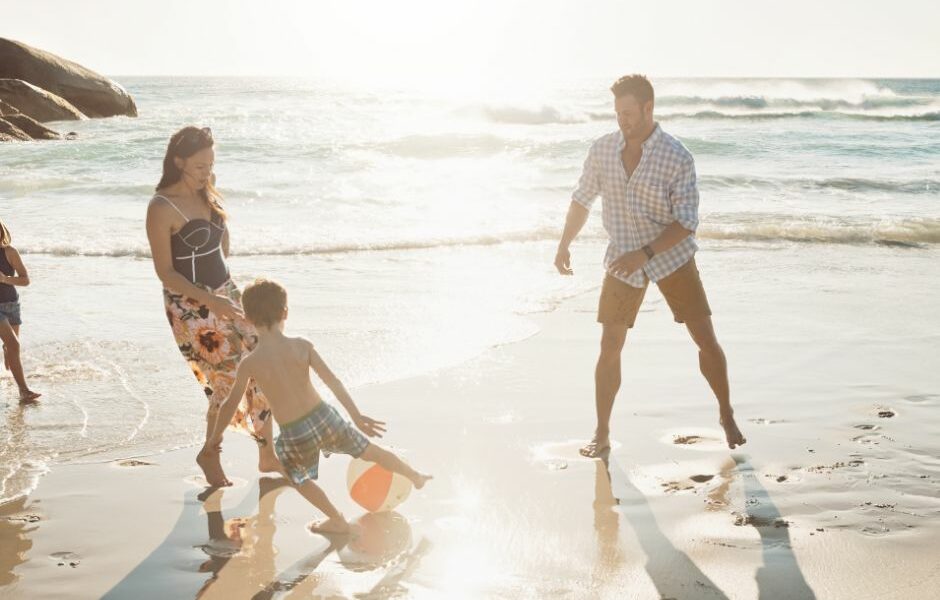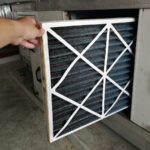
During Florida summers, the outdoor temperatures can easily reach 95 degrees. And to top it off, humidity levels fluctuate between 70% to 80%. Even if you’ve always lived in Florida, you never truly get used to these harsh conditions. But that doesn’t stop people all over the Sunshine State from enjoying the great outdoors. Summer is prime time for beach trips, pool parties, backyard bashes, and other exciting outdoor activities. That’s why everyone needs to be well educated on the ins and outs of heat stroke vs. heat exhaustion.
Veterans AC & Heat is here to help you get familiar with these dangerous heat-related illnesses. Read on to prevent risking the health and safety of yourself and your loved ones during these sweltering summer months.
The Four Heat-Related Illnesses
Heat-related illnesses, including heat stroke and heat exhaustion, occur on a spectrum. On one end are the more minor ailments that can be easily treated to prevent matters from worsening. On the other end are the more serious illnesses, heat exhaustion, and heat stroke.
Heat rashes and cramps are considered heat illnesses. Not always, but they can often be the precursors to more severe ailments. That’s why it’s essential to be familiar with the two lesser situations:
- Heat Rash: On the areas of the body where sweat can become trapped, you may develop a stinging or irritating red rash.
- Heat Cramps: Due to the sudden loss of fluids and salts, your muscles may have sharp pains or cramps.
Heat exhaustion occurs when your body cannot cool itself through its natural response of sweating. When untreated, it may lead to heat stroke. During heat stroke, the body often ceases sweat production altogether. The body’s temperature reaches hazardous levels, and symptoms can be life-threatening.
When experiencing heat stroke, it’s critical medical attention occurs as soon as possible. When it’s safe to do so, dial 911 to receive immediate and professional medical care.

Causes and Risk Factors for Heat Illnesses
Many conditions can lead to heat stroke and heat exhaustion. The main factors increasing your chance of experiencing these are heat, humidity, dehydration, and physical activity.
Your body produces sweat to cool its temperature. However, if the conditions are right or you push the limits of your body’s capability, it can struggle to produce the sweat it needs to maintain proper health.
Moreover, lack of hydration, consuming dehydrating beverages, like alcohol, or wearing tight and heavy fabrics in the heat can lead to heat illnesses.
Remember, heat illnesses can happen to anyone. However, some people may be more at risk than others. For instance, young children, babies, and older adults have a higher chance of experiencing heat stroke and heat exhaustion. Additionally, if your body is not used to high humidity levels, strenuous activity, or high temperatures, you have an increased chance of experiencing a heat-caused illness.
Can You Experience Heat Stroke or Heat Exhaustion Indoors?
Heat exhaustion and heat stroke can absolutely occur indoors. For example, suppose your AC breaks down, and you remain inside the hot unregulated air. In that case, you have the same chance of experiencing any heat illness as you would outside.
When your HVAC fails and the issue is not promptly addressed, it’s only a matter of time before indoor air becomes hot and humid. Furthermore, it can put other health factors at risk. The high humidity can welcome mold growth. Or common air pollutants, like allergens and dust, may accumulate and cause you and your family to feel sick.
Especially in the middle of summer, ignoring significant HVAC issues can be very dangerous. So, protect the health and safety of you and your household members by quickly responding to major AC issues.
More About Heat Stroke vs. Heat Exhaustion
Especially if you live in the Sunshine State, knowing what heat stroke and heat exhaustion look like is vital to your safety and health. In general, heat stroke is more severe than heat exhaustion. Therefore, when experiencing heat exhaustion, you must treat it immediately to avoid the onset of heat stroke.
What are the Signs of Heat Exhaustion?
Heat exhaustion may present itself in various ways. If you begin to struggle with any of the following, you may be experiencing this heat-related illness:
- An increase in body temperature
- Sharp muscle pains and cramps
- Sweating heavily
- Sudden and severe headache
- Quick and shallow breathing
- An increase in heart rate
- Dizziness and lightheadedness
- Nausea and vomiting
- Clammy and pale skin
- Weakness and extreme fatigue
What are the Signs of Heat Stroke?
In under 15 minutes, the body’s temperature can spike to dangerous levels. This is a significant sign of heat stroke and must be taken seriously.
Like with heat exhaustion, a person experiencing heat stroke may notice several or all the following symptoms:
- A temperature above 104 degrees Fahrenheit
- Strong and rapid heart rate
- Severe headache
- The inability to produce sweat
- Nausea and vomiting
- Dizziness, lightheadedness, and fainting
- Confusion
- Hallucinations
- Loss of consciousness
- Hot and inflamed skin
- Seizure
What to Do When Experiencing Heat Stroke or Heat Exhaustion
Knowing the signs and symptoms of severe heat-related illnesses is just one part of staying safe while physically active in a hot environment. You also need to know what to do when you or a loved one experiences heat stroke or heat exhaustion.
When these illnesses strike, take the following actions to help prevent symptoms from escalating:
First, Lie Down in a Shaded Area.
If you or a loved one begins to experience any of the heat illness symptoms, you should lie down immediately. If possible, find a spot nearby that is shaded or cooler than your current location. It’s even better if you are near an air-conditioned building. Don’t risk traveling far if you are worried about fainting. However, if the building is only a few steps away, it’s worth getting into the AC.
Furthermore, have a friend or family member help support your weight as you slowly walk to the establishment. It’s even more helpful if the loved one can carry you into the air-conditioned building.
Again, if you are on your own and are feeling dizzy and lightheaded, it’s best to lie down where you are and not risk collapsing.
Next, Attempt to Cool Your Body and Replenish Fluids.
Once it’s safe to do so, remove any excess clothing, like shoes, socks, or outer layers. You can further cool your body’s temperature using ice or a cold, damp cloth on the skin.
It’s also important to hydrate to replenish the fluids your body has lost. Drink water or sports drinks. If you feel nauseous, it’s wise to take slow, small sips. This will help your body not to reject the cool drink.
Never use soda, coffee, or alcohol to try to rehydrate. These drinks are, in fact, dehydrating and will only make matters worse.
Call for Medical Help.
No matter what, it’s always smart to call 911 and receive professional medical attention when experiencing heat exhaustion or heat stroke. Sometimes, anyone with you can treat heat exhaustion on the spot. However, when it comes to heat stroke, a medical professional is required to ensure the affected person will be okay.
Also, note that you should pick up the phone and dial for emergency help as soon as possible. If it is a heat stroke that you are struggling with, medical assistance must happen quickly.

Preventing Dangerous Heat Illnesses
The good news is that heat stroke and heat exhaustion are absolutely avoidable, even for those who are more at-risk. Summertime is when heat-related illnesses are at their peak. So, remember to implement the following prevention methods to keep you and your loved ones safe from these dangerous illnesses.
- Drink lots of water and sports drinks in a hot environment or when physically active.
- Avoid dehydrating beverages, such as tea, coffee, alcohol, and energy drinks.
- Always take someone with you when participating in strenuous activities in the heat, whether for exercise or work. Using “the buddy system” could save you or your loved one from an extremely dangerous situation.
- Take breaks frequently. Allow your body to cool off by sitting down for a moment, preferably in a cooler, shaded spot, and drinking fluids.
- When outdoor conditions are particularly hot and humid, opting for indoor exercise is wise.
- Wear proper clothing during strenuous outdoor activities. This may include lightweight fabrics, lighter colors, and loose-fitting clothing.
- Be familiar with the signs and symptoms of heat-related illnesses. Furthermore, share this helpful information with the people you are with. That way, everyone can be prepared for a potential emergency.
Stay Safe with Veterans AC & Heat
Florida residents not only have to worry about extreme temperatures during the summer. We all know hot and humid weather is typical practically throughout the entire year.
That’s why you need your home’s AC to be always in top condition. Reach out to Veterans AC & Heat for routine HVAC maintenance to ensure your unit is reliable at all times.



